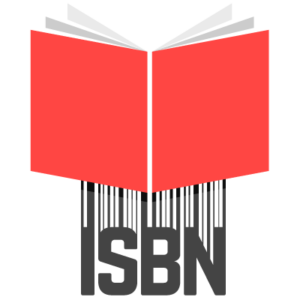Blended Learning With an Integrated Model in Learning and Teaching
DOI:
https://doi.org/10.2991/assehr.k.210226.002Keywords:
digital transformation, blended learning, integrated model, technology-enabled learning and teachingAbstract
In digital education, there are several challenges for schools and teachers to apply the concept of Education 4.0: (1) curriculum and teaching methodology, (2) no flipped classes, individualized learning, mostly synchronous, not asynchronous activities based on their syllabus or learning programs, (3) the application of artificial intelligence, the search for information in database, especially virtual reality (VR), (4) the tendency of self-learning, self-improvement, cooperation and communication, solutions to problems, creativity, and (5) long-life learning are the skills for the learners of today. To overcome these challenges, digital literacy is very important to both teachers and learners so that schools are set up as a digital environment including teachers and learners, knowledge, technology, and all the activities. The recent tendency in education in Vietnam is to promote an updated process in delivering methods in education together with technology-enabled learning and teaching in many countries in the world. That is the reason why blended learning has become more and more popular with the development of the computer and the Internet, creating opportunities for many learners in multiple locations to get access to user-friendly resources for their web-based learning. In addition, teachers are still the key performers in teaching and learning.Online education is still an updated argument and application in the digital transformation in the world. The article just introduces some major theories related to technology associated with learning. One critical question concerned whether an integrated or unified theory of online education could be developed to overcome its challenges.
References
Vietnamnews.vn, "Digital transformation: a must for enterprises," Vietnamnews.vn, 15 Dec 2020. [Online]. Available: https://vietnamnet.vn/en/scitech-environment/vietnam-digital-transformationday-2020-opens-697558.html. [Accessed 30 Dec
.
H. Anh, "Education 4.0: Challenges for Schools and Teachers (Giáo dục 4.0: Thách thức nhà trường và giáo viên)," 16 Dec 2020. [Online]. Available: https://giaoducthoidai.vn/giaoduc/giao-duc-40-thach-thuc-nha-truong-va-giaovien-w6Hdyb1Gg.html.
D. R. Garrison and N. Vaughan, Blended learning in higher education, San Francisco, CA: JosseyBass, 2008.
M. Cleveland-Innes, N. Ostashewski, S. Mishra, S. Gauvreau and G. Richardson, "TEL MOOC participant response to the community of inquiry theoretical framework.," in Teaching in a Digital Age – Re-thinking Teaching & Learning conference, International Council for Open and Distance Education, Toronto, 2017.
H. Gardner, Frames of mind: The theory of multiple intelligences, New York: Basic Books, 1983.
D. R. Garrison, T. Anderson and W. Archer, "Critical inquiry in a text-based environment: Computer conferencing in higher education
model," The Internet and Higher Education, vol. 2, no. 3, pp. 87-105, 2000.
T. Anderson, L. Rourke, D. Garrison and W. Archer, "Assessing social presence in asynchronous text-based computer conferencing," Journal of Asynchronous Learning Networks, vol. 5, no. 2, pp. 1-17, 2001.
T. Anderson, The theory and practice of online learning (2nd Edition), Edmonton, AB: AU Press, 2011.
J. Bransford, A. Brown and R. Cocking, "How people learn: Brain, mind experience and school," Washington, D.C.: National Academy
Press/National Research Council, 1999. [Online]. Available: http://www.colorado.edu/MCDB/LearningBiology/readings/Howpeople-learn.pdf .
C. Bosch, Promoting Self-Directed Learning through the Implementation of Cooperative Learning in a Higher Education Blended Learning Environment, Johannesburg, SA: Doctoral dissertation at North-West University, 2016.
J. Hannon and C. Macken, "Blended and online curriculum design toolkit," La Trobe University, Sept 2014. [Online]. Available:
https://www.latrobe.edu.au/__data/assets/pdf_file/0006/602178/Blended-learning-Toolkit-v4.pdf. [Accessed 1 Dec 2020].
C. Pappas, "Synchronous vs asynchronous learning: Can you tell the difference?," eLearning Industry, 9 Oct 2015. [Online]. Available: https://elearningindustry.com/synchronous-vsasynchronous-learning-can-you-tell-the-difference. [Accessed 2 Dec 2020].
SchoolEducationGateway, "Survey on online and distance learning – Results," SchoolEducationGateway, 8 June 2020. [Online].
Available: https://www.schooleducationgateway.eu/en/pub/viewpoints/surveys/survey-on-online-teaching.htm. [Accessed 3 Dec 2020].
MOET, "Higher education in 2021 and in the period 2021-2025: Five Main Issues. Retrieved from," Ministry of Education and Training, Vietnam, 13 Dec 2020. [Online]. Available: https://moet.gov.vn/tintuc/Pages/tin-tonghop.aspx?ItemID=7131. [Accessed 30 Dec 2020].
Downloads
Published
How to Cite
Issue
Section
License
Copyright (c) 2021 Phan The Hung

This work is licensed under a Creative Commons Attribution 4.0 International License.
Copyright
The copyright of all articles published in the Proceedings of the AsiaCALL International Conference (paic) remains with the Authors, i.e. Authors retain full ownership of their article. Permitted third-party reuse of the open access articles is defined by the applicable Creative Commons (CC) end-user license which is accepted by the Authors upon submission of their paper. All articles in the aicp are published under the CC BY-NC 4.0 license, meaning that end users can freely share an article (i.e. copy and redistribute the material in any medium or format) and adapt it (i.e. remix, transform and build upon the material) on the condition that proper attribution is given (i.e. appropriate credit, a link to the applicable license and an indication if any changes were made; all in such a way that does not suggest that the licensor endorses the user or the use) and the material is only used for non-commercial purposes.








